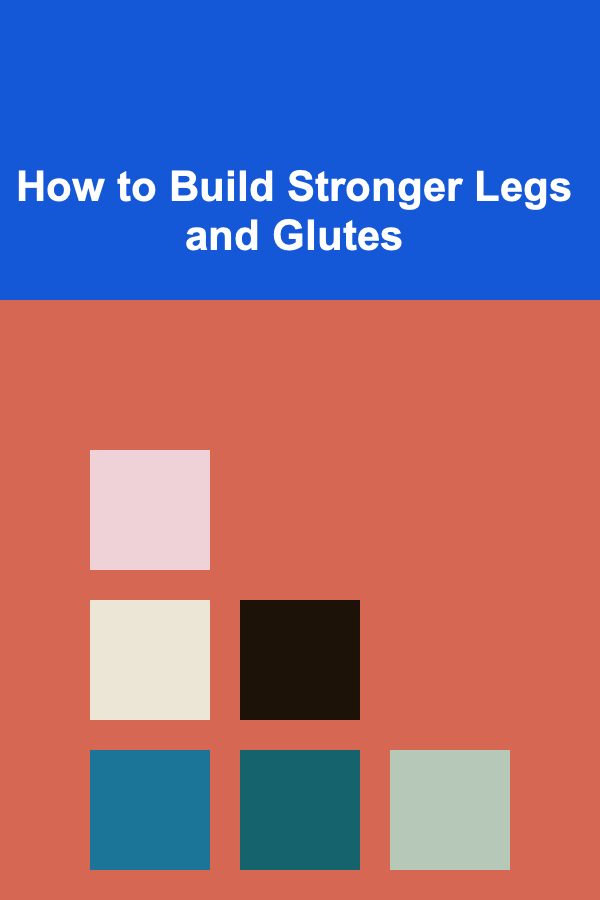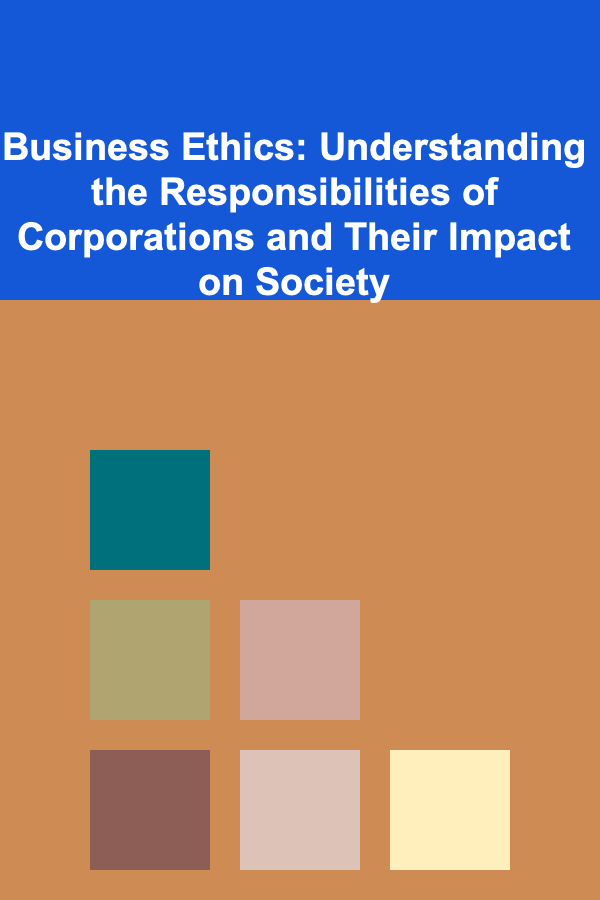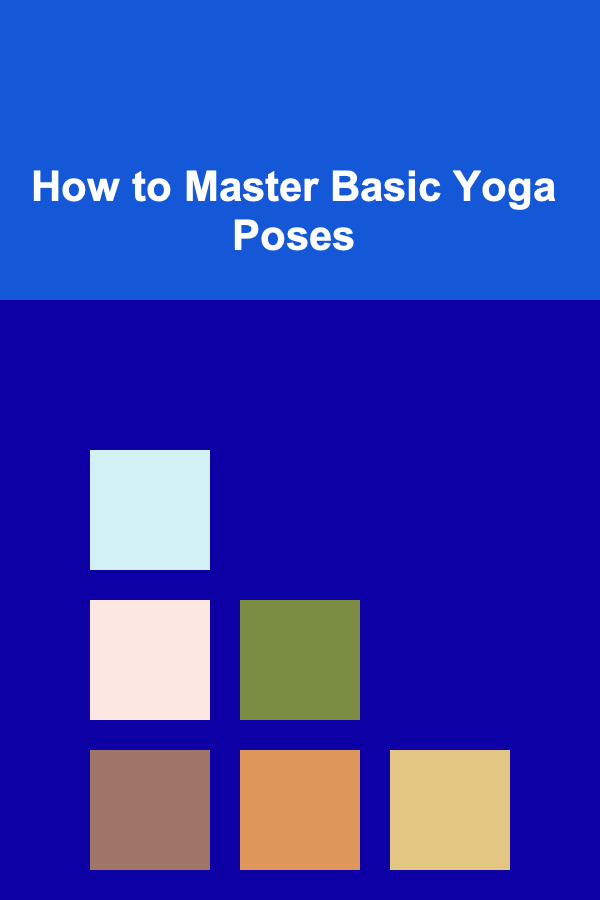
How to Build Stronger Legs and Glutes
ebook include PDF & Audio bundle (Micro Guide)
$12.99$9.99
Limited Time Offer! Order within the next:

Building stronger legs and glutes is a common fitness goal for many people, whether they are athletes, bodybuilders, or just individuals looking to improve their overall health. Strong legs and glutes not only enhance physical performance but also contribute to better posture, mobility, and reduced injury risk. In this article, we will explore the anatomy of the legs and glutes, the benefits of building strength in these areas, and provide a comprehensive guide on how to effectively build stronger legs and glutes.
The Anatomy of Legs and Glutes
Before diving into the exercises and training methods, it's essential to understand the muscles involved. The legs and glutes are composed of several key muscle groups that work together to produce strength, power, and stability.
The Muscles of the Legs
- Quadriceps: These muscles are located at the front of your thighs and are responsible for extending the knee. The quadriceps are made up of four muscles: the rectus femoris, vastus lateralis, vastus medialis, and vastus intermedius.
- Hamstrings: Located at the back of the thigh, the hamstrings are responsible for bending the knee and extending the hip. The hamstrings are made up of three muscles: the biceps femoris, semitendinosus, and semimembranosus.
- Adductors: These muscles are located on the inner thigh and are responsible for pulling the legs toward the midline of the body. The adductors include the adductor longus, adductor brevis, adductor magnus, and gracilis.
- Calves: The calf muscles include the gastrocnemius and soleus, which help in plantar flexion (pointing the foot downward) and are involved in movements such as walking, running, and jumping.
The Muscles of the Glutes
- Gluteus Maximus: This is the largest muscle in the glutes and plays a major role in hip extension, outward rotation, and abduction of the thigh. It is responsible for the shape and size of the buttocks.
- Gluteus Medius: Located on the outer side of the hip, the gluteus medius helps stabilize the pelvis during walking and running. It also assists in the abduction and medial rotation of the thigh.
- Gluteus Minimus: This is the smallest of the glute muscles and lies underneath the gluteus medius. It helps with hip stabilization and thigh rotation.
- Hip Flexors: Although not technically part of the glutes, the hip flexors work in tandem with the glute muscles to stabilize the pelvis and facilitate proper movement during leg and glute exercises.
The Importance of Strong Legs and Glutes
Building stronger legs and glutes offers a wide array of benefits, both functional and aesthetic. Below are some key reasons why you should prioritize leg and glute training:
1. Improved Athletic Performance
Strong legs and glutes are essential for virtually every sport. Whether you're running, cycling, jumping, or lifting, the strength and power generated by your lower body are crucial for optimal performance. For instance, sprinters rely heavily on powerful hamstrings and glutes for speed, while athletes in field sports need robust quads and calves for explosive movements.
2. Better Posture and Stability
The glutes play a significant role in maintaining proper posture. Weak glutes can lead to poor pelvic alignment and overcompensating by other muscles, resulting in lower back pain and discomfort. Strong glutes help stabilize the pelvis and spine, leading to better posture and reduced risk of musculoskeletal injuries.
3. Injury Prevention
A well-developed lower body can help prevent injuries in both the lower back and knees. Strengthening the quads, hamstrings, and glutes helps protect the joints and ligaments from stress and strain, especially during activities that involve high-impact or repetitive motions.
4. Increased Fat Burning
Training your legs and glutes can help burn a significant amount of calories. Because these muscles are some of the largest in the body, working them during resistance training can lead to an increase in overall calorie burn. This can be beneficial for those looking to reduce body fat or improve their body composition.
5. Enhanced Aesthetic Appeal
A strong, toned lower body enhances overall physique symmetry and contributes to a balanced, athletic appearance. Building well-developed glutes and legs can also boost confidence and self-esteem, as many people desire a sculpted and toned lower body.
Effective Exercises for Stronger Legs and Glutes
Building strength in the legs and glutes requires a combination of resistance training, compound movements, and targeting specific muscle groups. Below are some of the most effective exercises that can help you build stronger legs and glutes.
1. Squats
Squats are the gold standard when it comes to building leg and glute strength. They target multiple muscle groups, including the quads, hamstrings, glutes, and even the core for stability.
How to Perform a Squat:
- Stand with your feet shoulder-width apart and your toes slightly pointed outward.
- Engage your core and keep your chest lifted as you begin to lower your body.
- Push your hips back as if you're sitting in a chair, keeping your knees in line with your toes.
- Lower yourself until your thighs are parallel to the floor or as deep as you can comfortably go.
- Push through your heels to stand back up, straightening your legs and returning to the starting position.
Variations:
- Bodyweight Squats: Great for beginners or for adding volume to your workout.
- Barbell Squats: Adding weight will increase the difficulty and enhance strength gains.
- Sumo Squats: A wider stance targets the inner thighs and glutes more.
2. Deadlifts
Deadlifts are a compound movement that primarily works the hamstrings, glutes, and lower back. They also engage the core, upper back, and grip strength.
How to Perform a Deadlift:
- Stand with your feet hip-width apart, and place a barbell in front of your shins.
- Bend at your hips and knees to grip the barbell with both hands (use an overhand or mixed grip).
- Engage your core and keep your chest up as you lift the bar by pushing through your heels and extending your hips forward.
- Lower the bar back to the ground by pushing your hips back and maintaining a straight back.
Variations:
- Romanian Deadlifts: Focuses more on the hamstrings and glutes by keeping the knees slightly bent.
- Sumo Deadlifts: A wider stance works the inner thighs and glutes more intensely.
3. Lunges
Lunges are excellent for isolating each leg individually and working on balance and stability.
How to Perform a Lunge:
- Stand tall with your feet hip-width apart and your core engaged.
- Step forward with one leg, lowering your back knee toward the floor while keeping your front knee aligned with your toes.
- Push through the heel of your front foot to return to the starting position.
- Repeat on the other side.
Variations:
- Walking Lunges: Step forward with each leg, walking across the floor.
- Reverse Lunges: Step backward instead of forward to reduce knee strain.
- Jump Lunges: Add a plyometric element to increase intensity and target the glutes more.
4. Hip Thrusts
Hip thrusts are one of the most effective exercises for targeting the glutes. They allow you to lift a heavy load and fully activate the glute muscles.
How to Perform a Hip Thrust:
- Sit on the floor with your upper back resting against a bench or elevated surface, and place a barbell or weight plate across your hips.
- Roll the barbell over your hips and plant your feet flat on the floor, shoulder-width apart.
- Drive through your heels to lift your hips toward the ceiling, squeezing your glutes at the top.
- Lower your hips back to the floor with control and repeat.
Variations:
- Single-Leg Hip Thrusts: Perform the exercise with one leg at a time to increase difficulty.
- Banded Hip Thrusts: Add resistance bands to further activate the glutes.
5. Step-Ups
Step-ups are a simple yet effective exercise for building leg strength and glute activation.
How to Perform a Step-Up:
- Stand in front of a bench or elevated surface.
- Step one foot up onto the surface, pressing through the heel to lift your body.
- Lower your back leg back to the ground and repeat on the other side.
Variations:
- Weighted Step-Ups: Hold dumbbells or a barbell to add resistance.
- High Step-Ups: Use a taller surface to increase glute engagement.
6. Leg Press
The leg press machine is an excellent alternative to squats for those looking to target the quads, hamstrings, and glutes with controlled movements.
How to Perform a Leg Press:
- Sit on the leg press machine with your feet placed shoulder-width apart on the platform.
- Lower the safety handles and slowly lower the weight by bending your knees.
- Push the weight back up by extending your legs, focusing on engaging your quads and glutes.
Nutrition for Stronger Legs and Glutes
While exercise is essential for building muscle, proper nutrition plays a crucial role in achieving strength and size gains. To support muscle growth, you need to ensure you're consuming the right balance of macronutrients and micronutrients.
1. Protein
Protein is the building block of muscle tissue. To promote muscle growth, aim to consume enough protein daily. Sources of high-quality protein include lean meats, fish, eggs, dairy products, legumes, and plant-based proteins like tofu and quinoa.
2. Carbohydrates
Carbohydrates provide energy for your workouts. Consuming an adequate amount of carbs ensures that you have the energy to perform exercises at your best. Opt for whole grains, fruits, vegetables, and legumes for long-lasting energy.
3. Fats
Healthy fats, such as those from avocados, nuts, seeds, and olive oil, are essential for overall health and hormone production, including testosterone, which plays a role in muscle growth.
4. Hydration
Staying hydrated is critical for performance and recovery. Dehydration can lead to fatigue and impaired muscle function, so make sure to drink plenty of water throughout the day.
Recovery and Rest
Rest and recovery are just as important as exercise when it comes to building stronger legs and glutes. Muscle growth occurs during recovery, not during the workout itself, so be sure to incorporate rest days and adequate sleep into your routine.
1. Active Recovery
Engage in light activities such as walking or swimming to promote blood flow to the muscles and facilitate recovery.
2. Stretching and Foam Rolling
Incorporate stretching and foam rolling to improve flexibility and reduce muscle soreness. This will also help prevent tightness that could inhibit your ability to perform exercises correctly.
Conclusion
Building stronger legs and glutes requires consistent effort, proper exercise selection, effective nutrition, and adequate recovery. By focusing on compound exercises like squats, deadlifts, and lunges, along with targeting the glutes with hip thrusts and step-ups, you can develop a powerful and sculpted lower body. Remember, the key to success is consistency and patience.

Business Ethics: Understanding the Responsibilities of Corporations and Their Impact on Society
Read More
How to Create Engaging Video Production Projects for Students
Read More
How to Keep Your Home's Septic System in Good Working Order
Read More
How to Manage VIP or Special Attendee Registrations
Read More
How to Master Basic Yoga Poses
Read More
How to Create Ethical AI Systems
Read MoreOther Products

Business Ethics: Understanding the Responsibilities of Corporations and Their Impact on Society
Read More
How to Create Engaging Video Production Projects for Students
Read More
How to Keep Your Home's Septic System in Good Working Order
Read More
How to Manage VIP or Special Attendee Registrations
Read More
How to Master Basic Yoga Poses
Read More